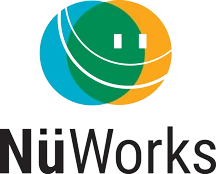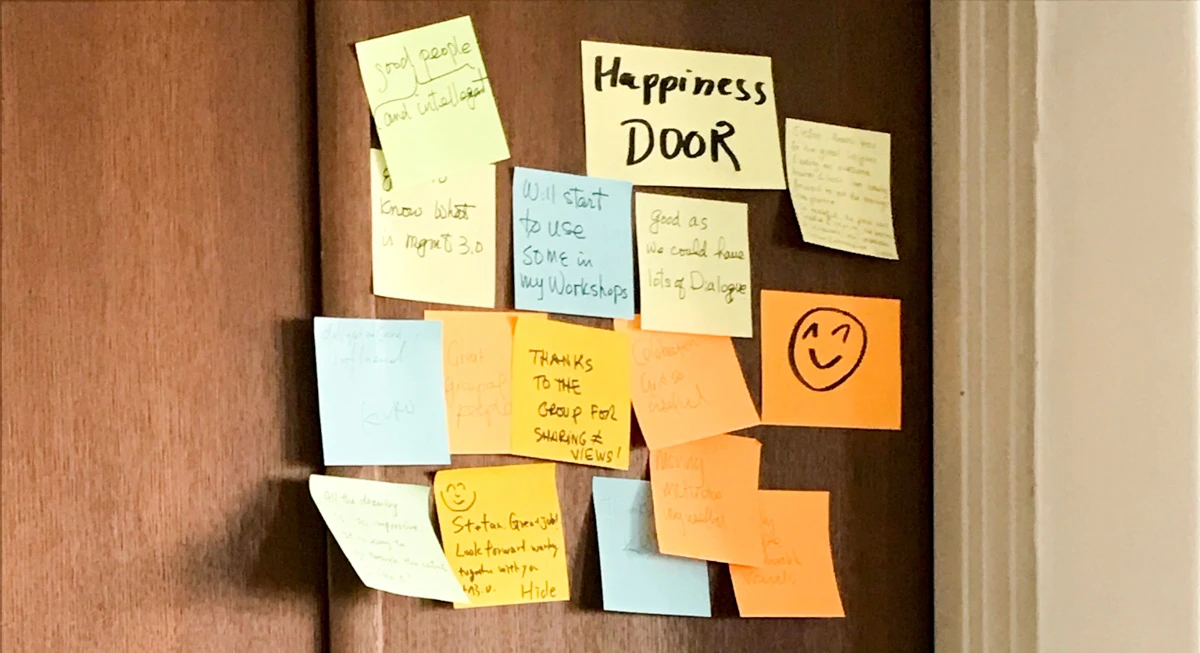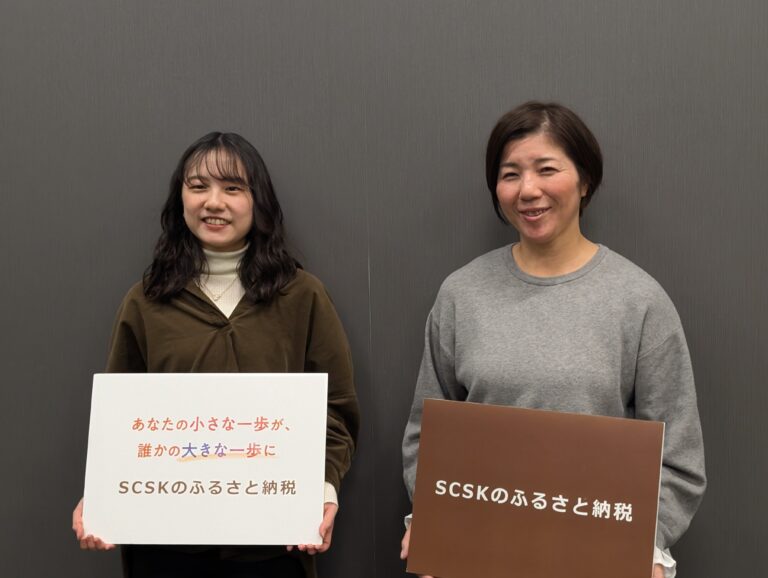Today I am showing you my most beloved Management 3.0 tool, the “Happiness Door”.
For three years I am running Management 3.0 workshops and meetups in Japan. At those events I always use the Happiness Door. I love it, because it’s so simple yet so powerful.
Happiness and Feedback, how does this goes along?
Jurgen Appelo got influenced by the Happiness Indicator and Feedback Wall and mixed it with his Mojito method into a new tool, called “Happiness Door”, which is one of the many Management 3.0 practices.
Here is how I use it:
- Simply put 4 post-its at the exit door or wall of your room.
- Draw 4 Smileys on it: Very Happy, Happy, Sad, Very Sad. Now you have created the Happiness Door (I always put a big post-it with “Happiness Door” on top of it)
- During a break or at the end of the workshop/meeting distribute post-its and ask the participants to put a post-it on the Happiness Door. They shall put it next to the smile which represents their happiness level regarding the workshop/meeting. It can be a empty post-it or they can also write some feedback on it.
Thats it! When finished you should see something like that:

You can easily see how happy your participants are with your work or if your event sucks. And you have valuable feedback which you can use to improve.
Watch this 5 min. video where Jurgen Appelo explains the Happiness Door in detail:
What I have learned from the Happiness Door

When I use the Happiness Door at my 2-Day workshops, I always received valuable insights. Usually I ask the participants at the first lunch break to give their happiness rating. The feedback helps me and my team to reflect and we can try to improve our work instantly. For example, one time a person’s feedback was that the room was too cold. That was obviously easy to fix and we could increase this persons happiness easily.
In another case it helped me to improve in the long term. One participant commented that we should provide clip-boards for note taking. I took this feedback and in the next workshop I distributed clip-boards to the participants. Hopefully those participants happiness increased a bit.
In most of my trainings the people gave good ratings but not always. There was a particular workshop were the happiness rating was quite low. Of course this negative experience was quite a draw-back and demotivating. But after all it is better to know it and deal with it, instead of your participants think “what a crap event was that”. It really helped to point out the things which could be improved and I could grow through it. Luckily, the following workshops until now have been filled with mostly happy people.
The Happiness Door increases Engagement
I believe that Kaizen is one of the most important things in order to run a successful business in today’s complex world. And this feedback should be collected easy and instantly, so you can learn and improve very fast. (By the way, those are also two of the eight complexity guidelines of Management 3.0).
And last but not least it is fun. People don’t enjoy filling out long questionnaires but from my experience they feel always happy when their voice and opinion is heard. They are engaged!
The Happiness Door is a very easy, lightweight, fast tool and it cost almost nothing. Give it a try and use it in your next meeting, workshop, seminar or whatever event you are organizing.





